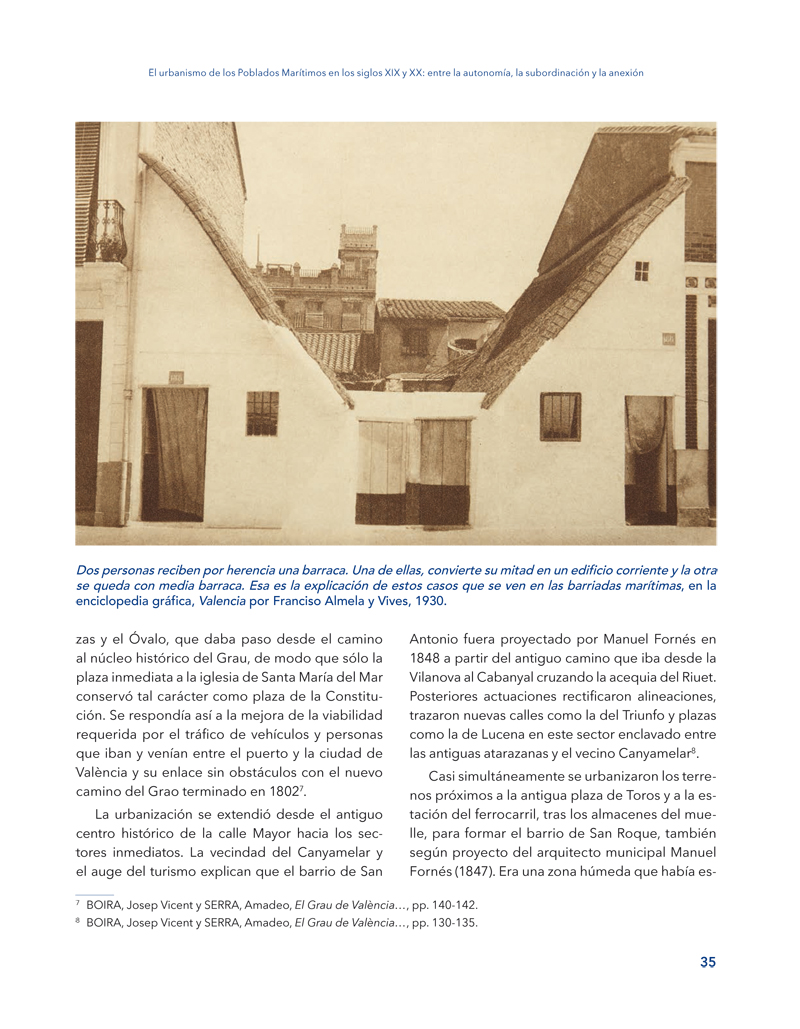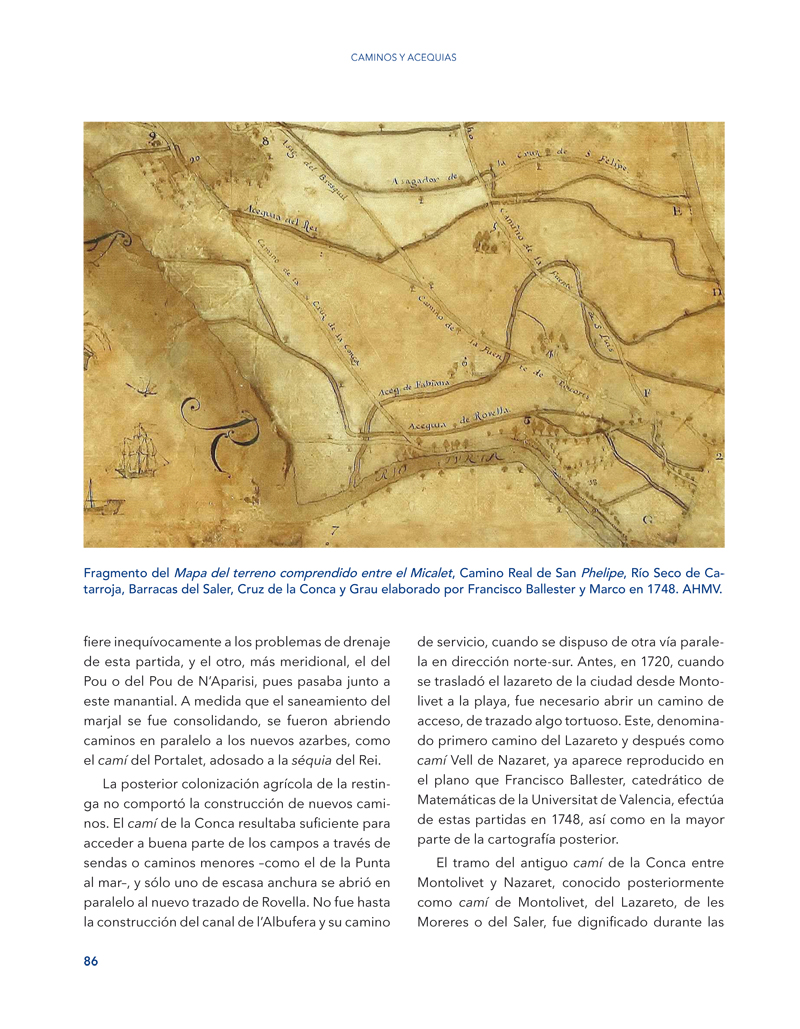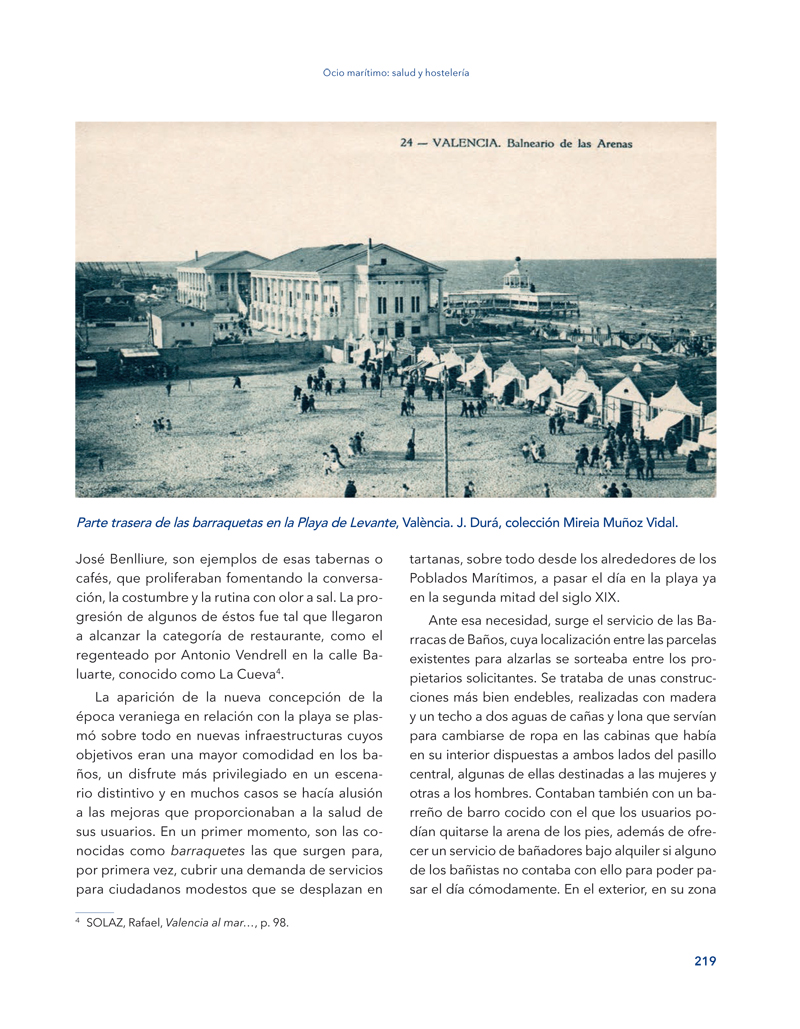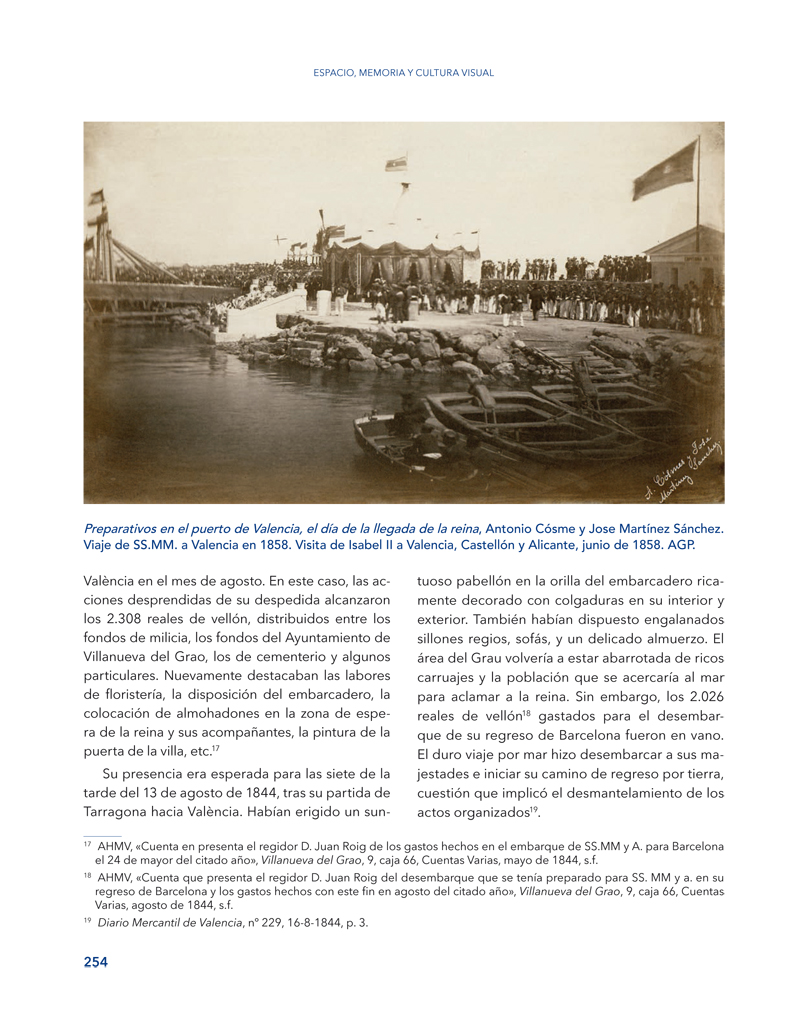Poblats Marítims. History, Locations and Scenery
- Authors: AGUILAR CIVERA, Inmaculada; SERRA DESFILIS, Amadeo
- Place, Editorial, Year: València , 2017.
- Publication types: Llibre
-
Abstract:
The seaside Valencian districts are the main focus of the book. To know is to preserve, that is true for all heritage. The pages ring value to these districts, their monuments and architecture, their urban track, their testimonies, their culture and their tradition. These districts are tightly related to sea activities which define their Mediterranean identity.
- 'Architecture and urban form of the Maritime Villages between the 13th and 18th centuries'. Amadeo Serra Desfilis.
- 'The urban planning of the Poblats Marítims in the 19th and 20th centuries: between autonomy, subordination and annexation'. Amadeo Serra Desfilis.
- 'La Casa de la Reina, a bourgeois dwelling in the 1840s expansion of Pueblo Nuevo del Mar'. Víctor M. Algarra Pardo.
- 'Religious architecture in the Valencian maritime settlements of El Grau, El Canyameral and El Cabanyal'. Pablo Cisneros Álvarez.
- 'Ditches and roads to the sea. Reconstruction of the agrarian landscape of the Maritime Settlements'. Carles Sanchis Ibor and Víctor Algarra Pardo.
- 'València al mar: the first projects around the former convent of San Juan de la Ribera, 1856-1900'. Susana Climent.
- 'Seven decades under water: the great floods in the Poblats Marítims'. Iván Portugués Mollá.
- 'The Turia Estuary. Manuel Beyxer's navigation channel between Valencia and El Grau'. Lourdes Boix.
- 'New times. Improvements, transformations and experiences'. Inmaculada Aguilar Civera.
- 'Supply, health and education. The architecture of services in the Poblats Marítims between the 19th and 20th centuries'. Pablo Sánchez Izquierdo.
- 'The train to Nazaret. 60 years out of service'. Virginia García Ortells.
- 'Social scenarios: subsistence and resistance of the seafaring villages'. Ester Medan Sifre.
- 'Modern times. Spaces for leisure and culture in the Maritime area'. Ester Medan Sifre.
- 'Maritime leisure: health and hospitality'. Mireia Muñoz Vidal.
- 'Oil and silver: the visual construction of the Maritime Villages'. Victoria Eugenia Bonet-Solves.
- 'Between the ephemeral and the enduring. Royal receptions in the Poblats Marítims'. Desirée Juliana Colomer.
- 'The perception of the religious image and the devotion to the Cristo del Grao'. Sergi Doménech García.
- 'Crossing of views: the relationship between the Poblats Marítims and theatrical scenography and pre-film shows'. Carmen Pinedo.
- 'The physiognomy of memory: the image of the Poblats Marítims in the cinema'. María Jesús Piqueras Gómez.
- 'La mar que tot ho envolta. A few glimpses of the history, customs and traditions of the maritime neighbourhoods of the city of Valencia'. Pep Martorell.
- 'The Maritime Easter Week. History, memory and identity'. Pedro García Pilan.
The book goes through the history of Poblats Marítims of Valencia with twenty one contribution from experts divided in six theme blocks for: the formation of seaside urban nuclei from the 13th century to the 20th century; the communication and irrigation networks; the changes of the late 19th century on their urban physiognomy and lifestyle; social scenery; art forms that highlighted the Mediterranean essence; and sailing traditions.
Chapters:








.jpg)

